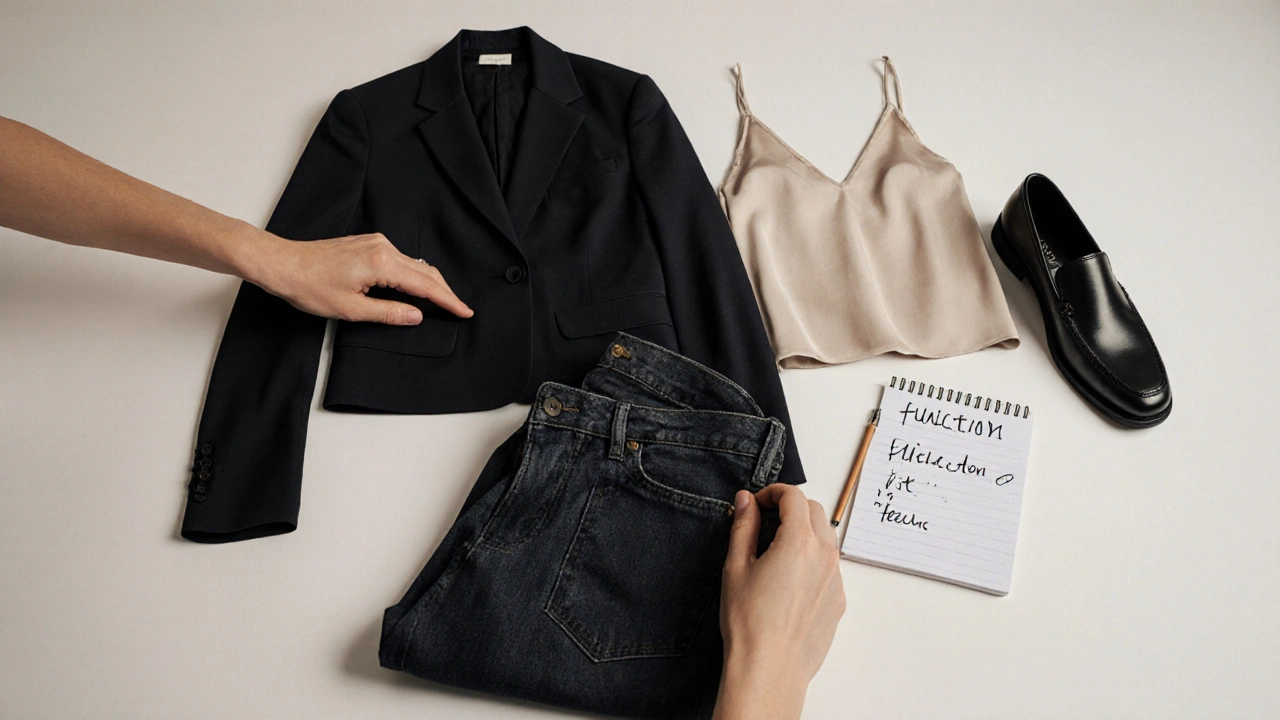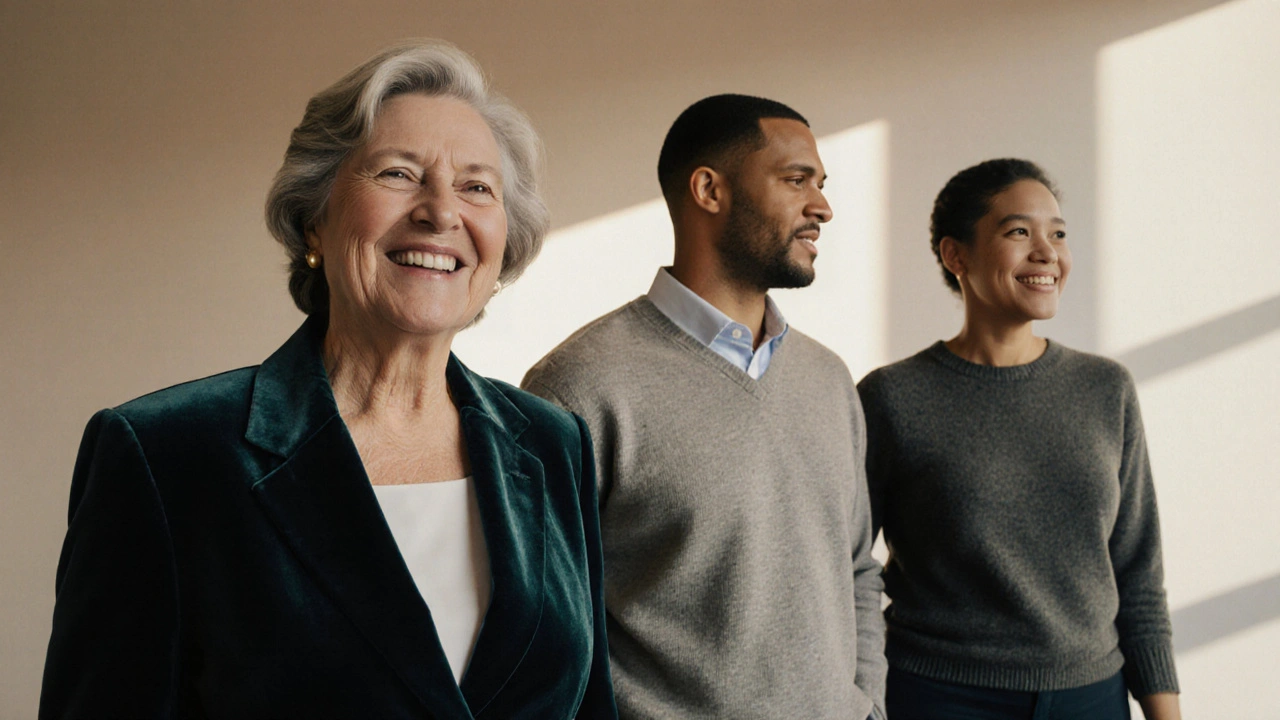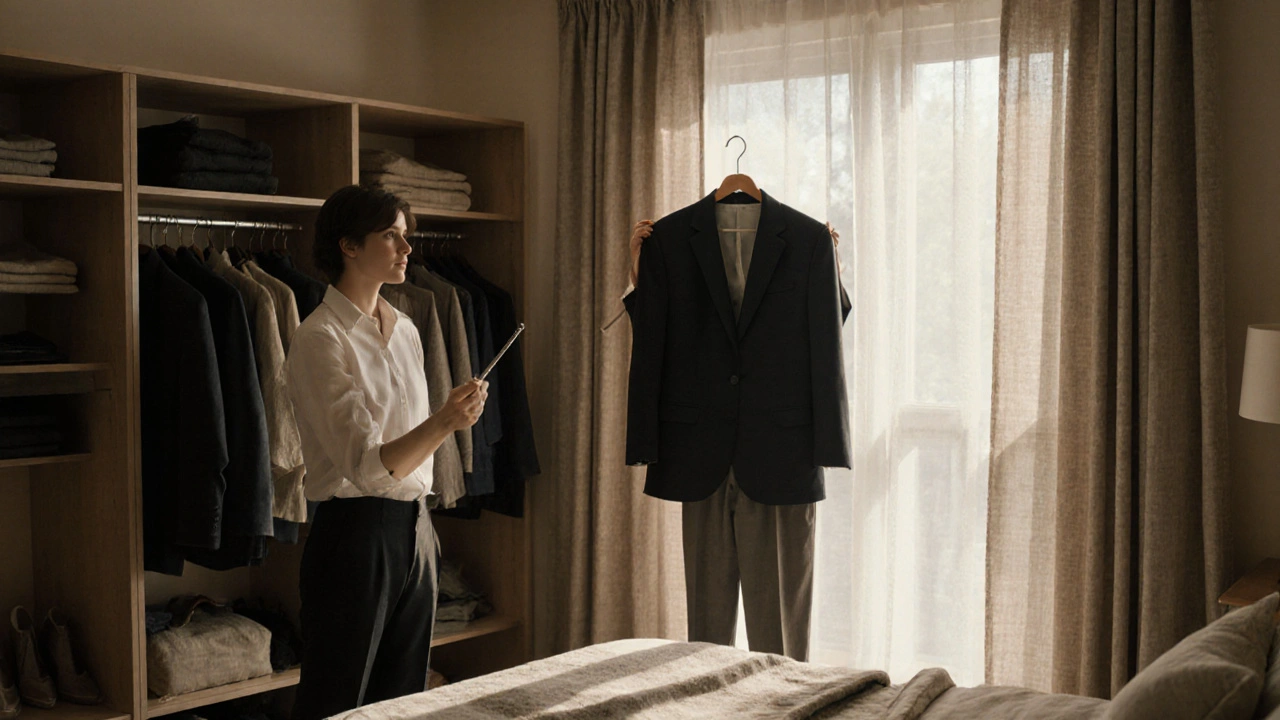Ever walked into a store with a shopping list in your head and walked out with five things you didn’t need? Or stared at a full closet and felt like you have nothing to wear? You’re not broken-you’re just missing the right system. That’s where a personal stylist comes in. Not the kind you see on TV flipping through racks in 30 seconds. Real personal stylists do something deeper: they rebuild how you interact with your clothes, your body, and your life.
They Don’t Just Pick Out Clothes
A personal stylist isn’t a glorified shopper. They start by asking questions you didn’t know mattered: What do you actually do all day? How do you feel when you wear certain colors? What clothes make you feel powerful versus invisible? Their job isn’t to impose trends-it’s to decode your habits, lifestyle, and unspoken needs.
Take someone who works in corporate law but hates wearing suits. A stylist won’t push tailoring. Instead, they might suggest structured blazers in neutral tones paired with tailored trousers and minimalist footwear. It’s still professional, but it feels like you. That’s the difference between buying clothes and designing a wardrobe.
Wardrobe Design Is a System, Not a Sale
Most people think wardrobe design means buying new things. It doesn’t. It means understanding what you already own and how it works together. A professional stylist will audit your closet-yes, every shirt, pair of shoes, and scarf-and map out what’s working and what’s dead weight.
They use a simple framework: function, fit, and feeling. Function: Does this item serve a real purpose in your life? Fit: Does it actually flatter your body shape and size? Feeling: Does it make you feel confident, calm, or energized? If an item fails two of these, it’s likely not worth keeping.
One client in Chicago had 87 items in her closet. Only 12 were worn regularly. The stylist helped her donate 53 pieces, repurpose 10, and keep just 24 that formed a cohesive, flexible system. She now gets dressed in under five minutes-and feels put-together every day.
They Solve Real Problems You Didn’t Know You Had
People hire stylists for different reasons, but the underlying issues are always the same:
- Wasting time staring at your closet in the morning
- Buying clothes that don’t fit right, then returning them
- Feeling out of sync with your current life stage (new job, body change, relocation)
- Not knowing how to dress for your body type
- Feeling like your style is stuck in the past
A stylist doesn’t just fix these-they prevent them from coming back. They teach you how to shop smarter, how to spot quality, how to mix and match without guesswork. It’s like learning to drive stick shift after only ever driving automatic. Once you know how, you never go back.

Color, Pattern, and Body Mapping Are Science, Not Guesswork
There’s a myth that stylists pick colors based on “what looks good.” That’s not true. They use color analysis based on undertones, contrast levels, and how light reflects off your skin and hair. A cool-toned person in warm oranges looks washed out. A high-contrast person in muted pastels looks dull. These aren’t opinions-they’re visual facts.
Body mapping is just as precise. A stylist identifies your body shape (apple, pear, rectangle, hourglass, inverted triangle) and then determines which silhouettes balance your proportions. For example, someone with broad shoulders and narrow hips (inverted triangle) benefits from A-line skirts and structured pants that add volume below. Someone with a small frame and larger bust (apple) looks best in V-necks and vertical lines that elongate.
These aren’t fashion rules-they’re optical physics. And stylists know them.
They Work With Your Budget, Not Against It
Some people assume personal styling is only for the wealthy. That’s not true. Many stylists work with clients on all budgets. The goal isn’t to spend more-it’s to spend smarter.
A stylist might help you spend $300 over six months on three perfect pieces instead of $1,200 on ten things you’ll never wear again. They teach you to invest in foundational items: a well-cut blazer, a pair of dark jeans that fit, a versatile coat. These become the anchors of your wardrobe.
They also know where to find quality at lower prices-outlet stores with good returns, sample sales, sustainable brands with durable fabrics, and even secondhand shops with curated selections. One client saved $2,000 in a year by switching from fast fashion to intentional buys guided by her stylist.
The Process: From Chaos to Clarity
Here’s how a typical professional styling session unfolds:
- Discovery Call - You talk about your lifestyle, goals, and frustrations. No judgment, no pressure.
- Closet Audit - The stylist reviews your current wardrobe, either in person or via photos. They note what you wear, what you avoid, and what’s broken or outdated.
- Style Profile - You get a personalized report: your color palette, body shape, preferred fabrics, and ideal silhouettes.
- Shopping Plan - A curated list of what to buy, where to buy it, and what to avoid. Includes specific brands, items, and price ranges.
- Wardrobe Build - You shop, and the stylist may join you (in person or virtually) to help you try things on and make decisions.
- Style Training - You learn how to mix, match, layer, and care for your clothes so your system lasts.
The whole process usually takes 4-6 weeks. But the results last years.

Who Benefits Most?
Stylists aren’t just for celebrities or high-income professionals. The people who see the biggest change are:
- Professionals transitioning into new roles (e.g., from remote work to in-office)
- People recovering from weight loss or gain
- Parents returning to the workforce after years out
- Those who feel invisible or outdated in their style
- Anyone tired of shopping but still wants to look intentional
One woman in her late 50s hired a stylist after retiring. She wanted to feel like herself again-not the “retired mom” stereotype. Within weeks, she had a wardrobe of tailored separates in rich jewel tones. She started getting compliments at the grocery store. She said it wasn’t about looking young-it was about looking like her.
What Stylists Don’t Do
They don’t force you into trends. They don’t make you buy luxury brands. They don’t judge your past choices. And they don’t promise you’ll look like a model.
What they do promise is clarity. You’ll stop guessing. You’ll stop wasting money. You’ll stop feeling like your clothes don’t belong to you. And you’ll start dressing with confidence-not because you’re following a trend, but because your clothes finally reflect who you are.
How much does a personal stylist cost?
Prices vary widely. Hourly rates range from $75 to $250, depending on experience and location. Package deals for full wardrobe design typically cost $500-$2,500. Some stylists offer one-time consultations for under $200. Many offer virtual options, which are more affordable than in-person sessions.
Can a stylist help me if I’m not into fashion?
Absolutely. In fact, most clients say they’re not fashion people. That’s why they hire a stylist-to take the guesswork out. Stylists focus on function and comfort first, style second. You don’t need to love trends. You just need to want to feel good in what you wear.
Do I need to buy new clothes?
Not at all. Many stylists start by helping you maximize what you already own. You might only need to replace two or three key pieces. The goal is to create a system that works with your current wardrobe, not to force you into a shopping spree.
How long does a wardrobe last after a styling session?
A well-designed wardrobe lasts 3-5 years if you maintain it. That means storing clothes properly, repairing small damages, and adding one or two new pieces each season to refresh the system. Stylists often offer follow-up check-ins to help you stay on track.
Can a stylist help with men’s wardrobes?
Yes. Men’s styling is one of the fastest-growing areas. Many men struggle with fit, fabric choices, and building versatile outfits. A stylist helps them move beyond the same three button-downs and jeans. Tailored chinos, well-fitted sweaters, and layered outerwear can transform a man’s daily look without needing to be trendy.
Next Steps: How to Find the Right Stylist
If you’re ready to try it, start by looking for stylists who specialize in your needs. Are you looking for workwear? Casual life? Plus-size styling? Maternity? Find someone with experience in your area.
Check their portfolio. Look for real clients-not just runway looks. Read reviews that mention results, not just “she’s so nice.” Ask for a free 15-minute call. A good stylist will ask you questions before they sell you anything.
Remember: this isn’t about looking perfect. It’s about feeling like yourself-every day, without thinking about it.


Write a comment